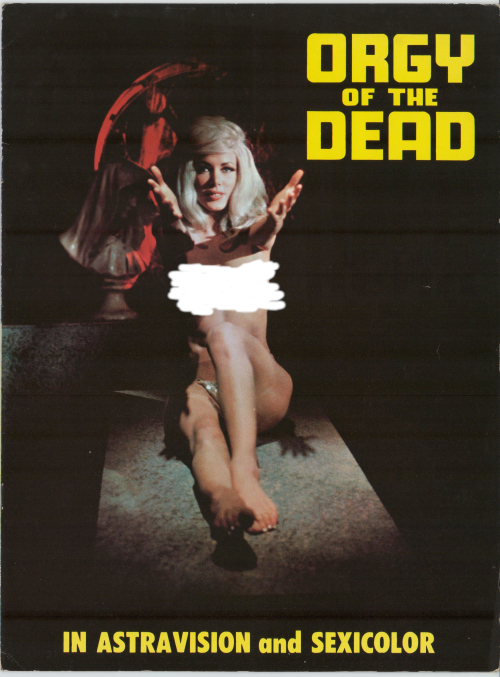I caught Orgy of the Dead many, many years ago, late one night. For the life of me I can’t remember where, but it may have been a late-night showing on some UHF channel. I was naughty, even then, and UHF had lax standards. After Criswell introduces this magnum opus “I am Criswell. For years, I have told the almost unbelievable, related the unreal and showed it to be more than a fact. Now I tell a tale of the threshold people, so astounding that some of you may faint. This is a story of those in the twilight time. Once human, now monsters, in a void between the living and the dead. Monsters to be pitied, monsters to be despised. A night with the ghouls, the ghouls reborn from the innermost depths of the world,” it goes on and on with topless burlesque dancers and a few monsters standing around a lot. My threshold for amusement dropped out after about 20 minutes. The pressbook for this odd entry into the nudie cutie sub-genre is rather small but also filled with topless women.
I’ve gone all prude and whited out the naughty bits for the sake of not offending anyone with this alluring image, but you can see all the naughty bits in the unexpurgated pressbook.
ComicRack reader version: Download Orgy of the Dead Pressbook
See more, but less naughty (sorry), pressbooks From Zombos’ Closet.

